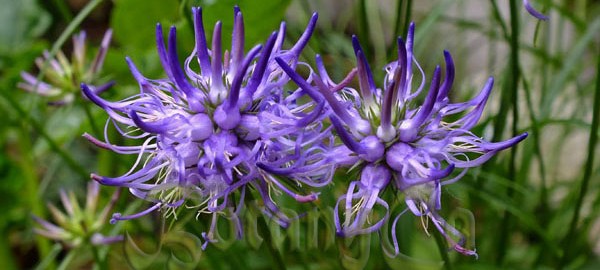People in Europe call this member of the bellflower family (Campanulaceae) after many names: devil’s claws (Germany), Oxford Rampion (England), Raponzolo (Italy), and so on. We could definitely give it many other common names; I like to think of it as Rapunzel’s flower.
Phyteuma is strictly a European genus with quite a few species, not very often seen in the gardens. Phyteuma scheuchzeri, flowering now in one of my rock-containers is the most common in cultivation (I was aiming for P. sieberi, maybe next time…).
It doesn’t look like a bellflower, that’s for sure – it looks much cooler! In most species the flowers are grouped in spiked, ball-like inflorescences (aka. floral sea creatures) which at full bloom ‘explode’ becoming fluffy. They can be found growing in a variety of habitats, with P. sieberi being the most alpine.
Another mountain growing Rapunzel’s flower is Phyteuma orbiculare, photographed here in a rich sub-alpine meadow in the Carpathian Mountains:
Propagation: easy enough from seed (very small, fine seeds just like Campanula).
And just because I like word rhymes: Did you know that Phyteuma has a sister named Asyneuma? Another great but very little cultivated member of the bellflower family.
















